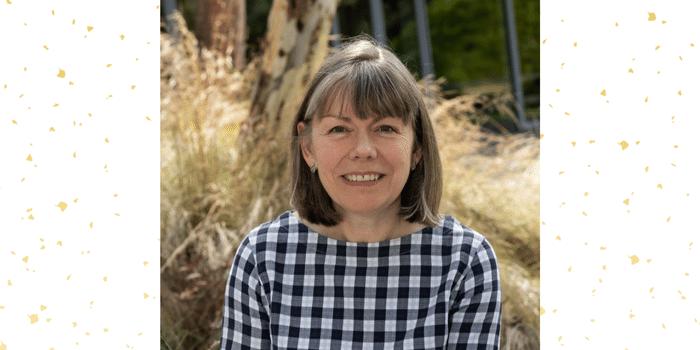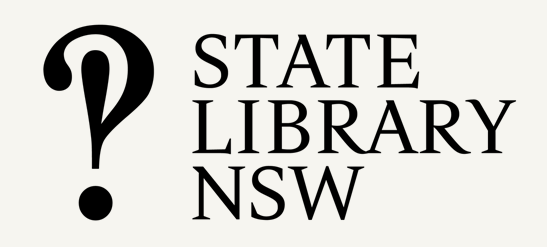After a decade in Canberra very successfully steering ALIA, Australia’s national membership organisation for LIS professionals, late last year Sue McKerracher left the nation’s capital to take up the reigns at Libraries Tasmania. We asked her to tell us about her career in and around libraries, and her vision for Libraries Tasmania’s future.
Tell us briefly about your career path.
I trained as a journalist and worked for one of the big publishers in the UK for a few years before moving into public relations and from there into marketing. I had my own communications agency, which went from me in my second bedroom at the start, to offices in South London and 40 staff before I sold to a management buy-out team in 2000.
With small kids, I wasn’t planning to go back to work immediately, but one of my former clients had moved to the British Library as Marketing Director and asked me to go and help with a couple of projects. And once in libraries, I was hooked. I did more work for the British Library. I spent a couple of years on contract with the Museums Libraries and Archives Council, part of the Department of Culture, Media and Sport. Then, for family reasons, came the move to Australia in late 2007.
Before long, I was doing strategy work for the City of Melbourne, the University of Melbourne and some smaller organisations. Then a meeting with Anne-Marie Schwirtlich, CEO of the State Library of Victoria, set me off on a path of working with libraries in Victoria on specific projects and nationally, as the Director of the National Year of Reading in 2012. As the campaign drew to a close, I applied for the job of CEO of the Australian Library and Information Association (ALIA) and spent 10 years in Canberra with a terrific team of people, advocating for libraries with federal government and supporting professional education in the library field. It was the best job I have ever had…until now.
What attracted you to work at Libraries Tasmania?
Throughout my time with the National Year of Reading and ALIA, I was aware of the work of Libraries Tasmania. A couple of visits to the state each year, constant email communication, hearing from Tasmanian representatives on the Australian Public Library Alliance and Australian Media Literacy Alliance, it all painted a picture of a library service that is run by very committed people, with a ‘can-do’ attitude, being creative, innovative, and achieving amazing results on a fraction of the resources of the other states.
I always said that this was a job I would love to have so when the opportunity came up, I applied. And I’ve not been disappointed. The 360 people who make up Libraries Tasmania are incredible. They go the extra mile every day. The 46 public libraries are much loved and doing such valuable work. The State Library and Archives collections contain extraordinary treasures. Our Convict Records are well known, but who knew we had an original Turner painting in the Allport Library and Museum? Every day throws up new opportunities, new discoveries.
What’s the most challenging thing about leading a library in the digital age?
Users have such high expectations. In the commercial world, companies invest millions in digital technologies that create a highly personalised, intuitive online experience for customers. As government libraries, we have limited budgets and our tech response is clunky by comparison.
Maybe we can’t beat businesses for their clever use of digital platforms, but we can try to keep pace, thanks to our industry partners investing in ever more sophisticated library apps and management systems. And we can more than match other online providers with the quality and care of the one-to-one service we provide to library users.
In our efforts to keep pace with change, we can’t chase every innovation. We don’t have the time, resources and budget. We need to work out what is going to be truly transformative and what’s a short term fad – but it’s hard to tell at the outset and often something of a gamble. MOOCs (Massive Open Online Courses) had detractors at the start, but over the last 10 years have made tertiary learning freely available to millions who could never have undertaken a full degree. And where some maker spaces are thriving, I’ve also seen a lot of 3D printers in cupboards not being used.
Where do you see your library in five years?
In government, we hear about the need for ‘a uniquely Tasmanian, place-based response’, and Brand Tasmania distils its message as ‘encouraging Tasmanians to quietly pursue the extraordinary’. These phrases capture where Libraries Tasmania’s focus has been and must continue to be, providing a hyper-local, personalised experience for our users.
Libraries Tasmania covers the State Library, Tasmanian Archives, public library network, adult learning, 26TEN literacy program, prison library service, Allport Library and Museum, with some support for school and TAFE libraries, so it’s a very wide remit. We have a serious literacy issue in the state, which of course rolls over into a digital literacy problem, and much of our effort will continue to be focused on people experiencing the disadvantage low literacy brings with it.
At the other end of the scale, I’d like to see us giving greater definition to the unique aspects of the State Library and what we have to offer researchers, scholars, visiting academics, writers, family historians. Tasmanians talk about borrowing books from the State Library when they mean the public library network. If this is the extent of their knowledge of our service, it may well be that they’re missing out on the special collections held by the State Library and Tasmanian Archives and the expert help of our reference librarians and archivists. This approach will require more emphasis on our exhibitions, public talks, programs and events at the State Library at 91 Murray Street in Hobart and at Launceston Library in the North.
What is your favourite item in the collection?
People think of the State Library of Tasmania as the 1970s office building on the corner of Murray Street, but behind is a 10-storey tower which is home to heritage collections, artworks, rare books, archives, records, ‘elephants’ that are too big for normal shelves and many other exciting discoveries. My favourite item changes regularly, but I love vintage children’s books and in the stacks we have a collection of children’s books formed in part from the last copies previously held in our lending libraries, so if I had to home in on one item it would probably be somewhere in there.










